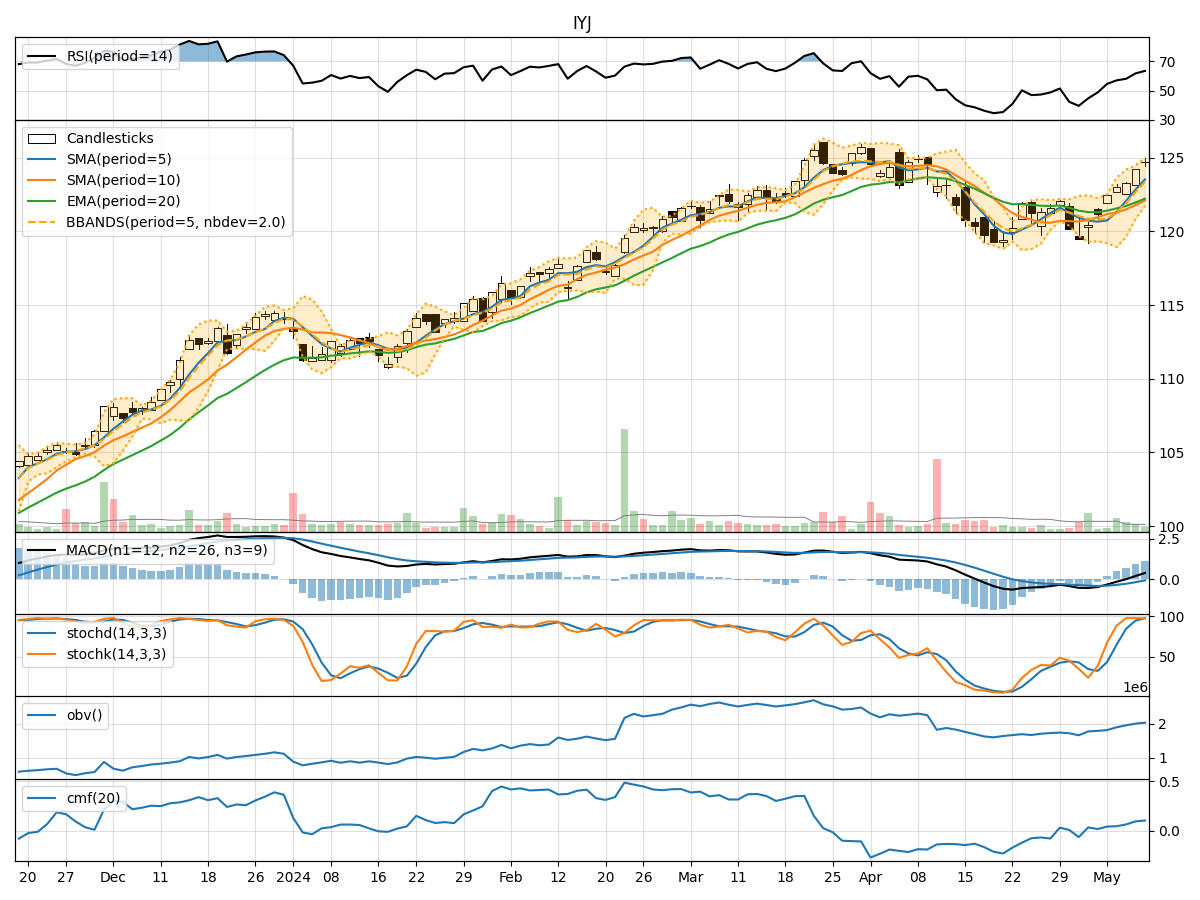
Technical Analysis of IYJ 2024-05-10
Overview:
In analyzing the technical indicators for IYJ over the last 5 days, we will delve into the trend, momentum, volatility, and volume indicators to provide a comprehensive outlook on the possible stock price movement in the coming days.
Trend Indicators:
- Moving Averages (MA): The 5-day MA has been consistently above the closing prices, indicating a short-term uptrend.
- MACD: The MACD line has been above the signal line, suggesting bullish momentum.
- RSI: The RSI has been in the neutral zone, indicating neither overbought nor oversold conditions.
Momentum Indicators:
- Stochastic Oscillator: The stochastic indicators have been in the overbought territory, signaling potential for a reversal.
- Williams %R: The Williams %R has been fluctuating around the oversold region, suggesting a mixed sentiment.
Volatility Indicators:
- Bollinger Bands: The price has been trading within the upper Bollinger Band, indicating an overbought condition.
- Average True Range (ATR): The ATR has been relatively stable, suggesting consistent price movements.
Volume Indicators:
- On-Balance Volume (OBV): The OBV has shown a gradual increase, indicating accumulation by investors.
- Chaikin Money Flow (CMF): The CMF has been positive, reflecting buying pressure in the market.
Key Observations:
- The trend indicators suggest a bullish sentiment in the short term.
- Momentum indicators show signs of potential reversal due to overbought conditions.
- Volatility indicators indicate an overbought market with stable price movements.
- Volume indicators point towards accumulation and positive buying pressure.
Conclusion:
Based on the analysis of the technical indicators, the next few days for IYJ could see a potential pullback or consolidation as the momentum indicators signal overbought conditions. However, the overall trend remains bullish in the short term. Traders should exercise caution and consider taking profits or implementing risk management strategies in anticipation of a possible correction.